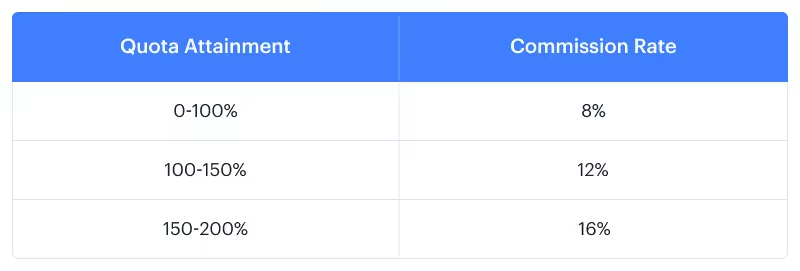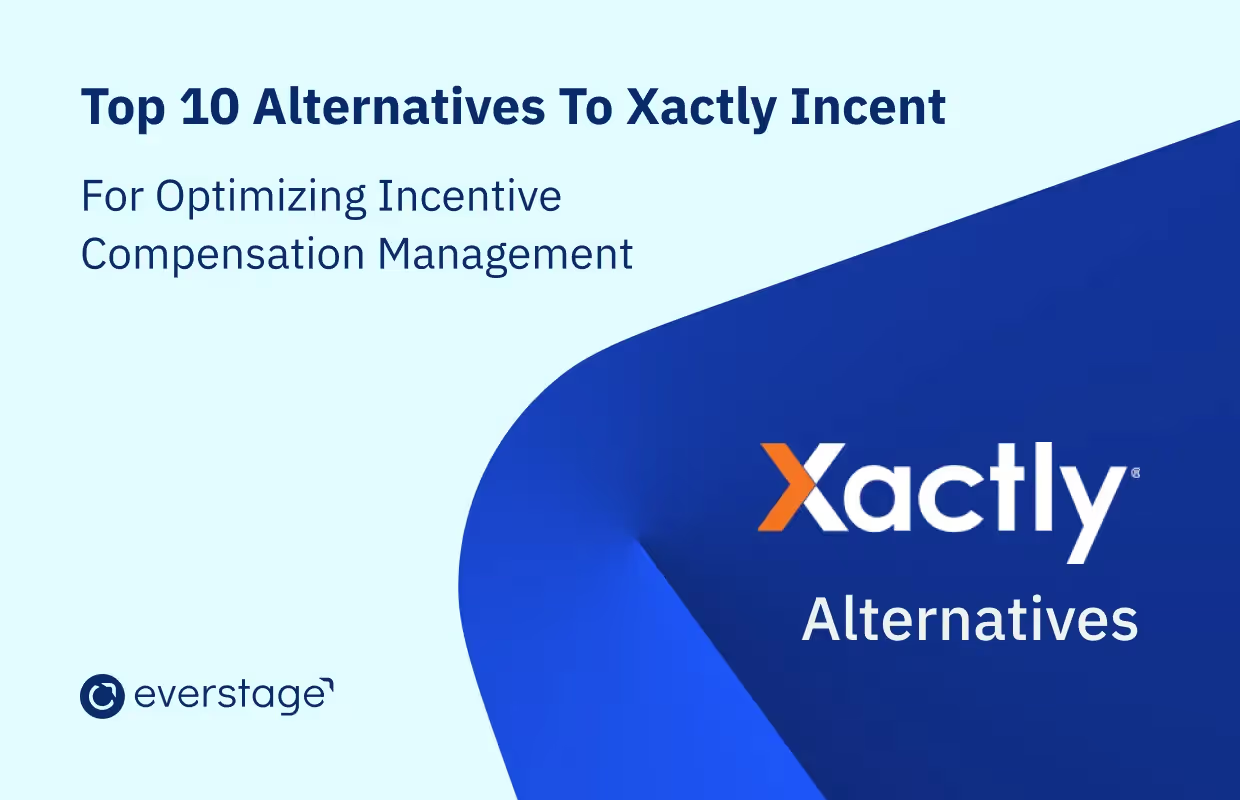Tiered commission structures motivate sales reps to exceed quotas by offering escalating commission rates as they achieve higher sales milestones, driving both performance and company growth.
- Encourage reps to go beyond targets with increased earnings at each tier.
- Balance attractive incentives with company profitability as sales scale.
- Ensure transparent, error-free commission calculations to build trust.
- Leverage tiered plans for mature teams aiming to reward and retain top performers.
Let’s begin with a question: what’s the numero uno motivation for salespeople to be in sales?
Here’s what 10 out of 10 reps would answer: Commissions.
To ensure that your reps are paid the commission they deserve, you’d need a proper commission structure in place. While there are different types of it, the Tiered Commission Structure is unique in its own way, as it motivates reps to go beyond just attaining their quotas.
Let’s deep dive into the Tiered Commission Structure, how to design one, best practices, and more.
What is a Tiered Commission Structure?
In general, sales reps are set a target to attain over a specific period of time, so that they earn their full quota of commissions. Here’s what a sample commission structure looks like:
Your rep has a fixed pay of $60k and an OTE of $100k annually. Here, the incentive pay will be $40k (OTE = Base salary + Commissions at 100% quota achievement for the year). If the allotted quota for a rep is around $500k per year, then the commission rate of the rep is 8% on OTE ($40k divided by $500k).
The commission rate of reps doesn’t increase once they attain their quota, and so, they wouldn’t be motivated to close deals after reaching their target. A tiered commission structure solves this problem.
This commission plan uses tiers to motivate reps to go past their sales goals and keep closing as many deals as possible. The commission rates keep increasing depending on their performance.

An example can give you a clear picture of how this commission structure works. Considering the above table, reps would earn a commission rate of 8% for each deal until they reach a target of $100,000. After this, their commission rate would be 12% till they do $150,000 in total sales, and so on.
How to Design a Tiered Commission Structure?
Alright, now you’ve decided to go ahead with a Tiered commission structure for your reps. What next? Laying out a plan to design it in the right way. Here’s how to do it:
- Firstly, set quotas for your reps.
- Clearly define the milestones that your reps have to reach.
- And finally, determine the commission rates for every milestone.
As you assign rates, ensure that it’s a win-win for both the reps and the company. While the increasing commission rate should motivate the reps, it should also ensure profitability for your business, without which you'd be in trouble.
When it comes to outlining tiers, it should be dependent on the goals of your organization. It can be about the total number of deals closed, reaching a specific revenue goal, etc.
When to Use a Tiered Commission Structure?
At times, your current commission plan may not turn out to be as effective as you thought it would be. As a business, you’d want to drive more sales & revenue, and a tiered commission can help you do just that. Here the star sellers are lucratively rewarded while motivating the other reps as well to keep pushing their boundaries. This commission plan can work really well for larger & established sales teams, simply for the reason that they’ll have the resources to pay the reps as they close more & more deals.
One more scenario where the Tiered Commission Structure can be used is, when reps sell the products in one currency and get paid in another.
The Pros & Cons of Tiered Commission Structure
Pros
1. Tiered commission structures ensure fairness, as the commission of reps directly depends on their performance.
2. Acts as a great motivating factor in making reps close deals even after they’ve attained their quota.
Cons
1. If you do not have the resources to pay your high-performing reps, the commission plan may backfire.
2. This commission structure may be a little confusing for your reps. Providing clarity to them while being accurate with the commission calculation is important in this case.
Best Practices
Here are some of the best practices to consider when implementing a tiered commission structure.
Eliminate the errors
The tiered commission structure brings added complexity to the commission, which eventually can cause errors. Make sure that the calculation is accurate, since glitches can break the motivation of your reps.
Stay on track with commission payment
Your reps wouldn’t like any delay in the commission payment, which would only frustrate them. Make use of commission tools for a complete track of your commissions.
Communicate extensively
Thoroughly communicate the plan to sales reps, and make it a point that everyone is on the same page before you get it rolling. Also, give them real-time visibility to their commissions, which only further adds to the motivation.
The Impact of Tiered Commissions On Your Profit Rates
As we saw above, when you’ve a Tiered Commission, reps would be motivated to close more and more deals in the current quarter, without pushing them to the next one.
So, here’s the question. What will be the impact of Tiered Commissions? Will it turn out to be profitable for you? The answer is that it eventually will. In general, the quota to OTE ratio of the reps you hire would range between 4:1 and 6:1.
Considering the below table as an example, you can clearly see that as the performance of the reps increase, the quota to OTE ratio also increases.

Final Thoughts
Tiered commission structures can keep your salespeople driven while helping your business thrive. But do cover your bases before implementing this commission plan. Also, confirm whether you’ve the resources to go ahead with a plan like this, and use a commission tool to keep a complete track of how your reps have fared. Giving them real-time visibility to their commission can also get them more involved in the process.
If you’re looking for a helping hand in managing your commission process, we’re right here. Get to know how our commission tool works by booking a demo here.




.avif)
.avif)






